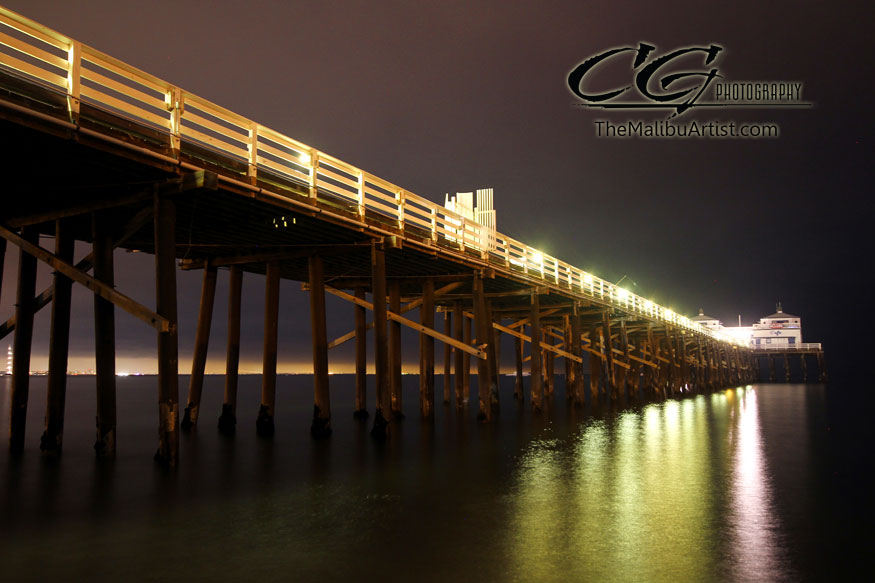Last night, I wrote about a few basic applications of
shutter speed. So tonight I thought I’d
actually go out and play a little bit in the dark and experiment with slow
shutters. I took a short drive to the Malibu Pier. There was no moon tonight
(behind the clouds) so it was exceptionally dark. At first glance, you wouldn’t
think that it would even be possible to get a Fine Art print in this darkness.
Here’s the results…
 |
| The Malibu Pier. Manual Mode 30 sec exposure at F-4.5 at 200 ISO |
You see, in my opinion, the best way to actually see and
understand the concepts of light and its relation to the camera is to practice in
the dark. Try it for yourself. Use Tv mode on a Canon DSLR (S-mode on Nikon)
and just turn out the lights to begin (Of course, strive to make your way to using Manual Mode at least 90% of the time).
When I used to teach photography courses in conjunction with
a local university people in my classes always thought it was odd that on the
first day of class I would not turn the lights off in the room. Sure, we used
to do all the introductions and ice breakers with the lights on, but then, I’d
just turn out the lights.
The thing about shooting in the dark is that you can
literally see the concepts of F-Stop, ISO and Shutter. With the lights
off you can drag the shutter for say 30 seconds and surprise yourself with the
amount of light there actually is in the room. Once you see this for the first
time, you will be hooked. Then you can
really have fun and start “painting” with light (something I will discuss in
the future) or manually control the amount of light going into the shutter by
putting you hand over the lens while the shutter is open.
 |
| The Malibu Pier. Manual 30 second exposure at F 5.6 at 200 ISO...this is stopped down to 5.6 because the scene was brighter. |
For the shot of the pier above, I used a 30 second exposure. The movement of the
water, the airplanes, and even a big yacht in the background is captured, but
adds to the artistic element. Remember,
when the shutter is open for long time it’s sort of acting like a video camera,
it recording the motion in front of it, but not in a video sense. The only way
to understand this concept is to shoot it yourself and see.
There are just a couple basic things to remember when you do
turn out the lights.
- Stabilize the camera or use a tripod to ensure you get sharp photos.
- Remember your subject. A moving subject in the dark will appear like a ghost and won’t necessary come out (lots of fake ghost photos are done this way by the way)
- Photo’s in the dark are normally best for stationary objects.
I’m going to try to keep these blogs short and simple, but I
will be adding more advanced details in the future. In the meantime…dim the
lights or turn out the lights and surprise yourself! -cg

No comments:
Post a Comment